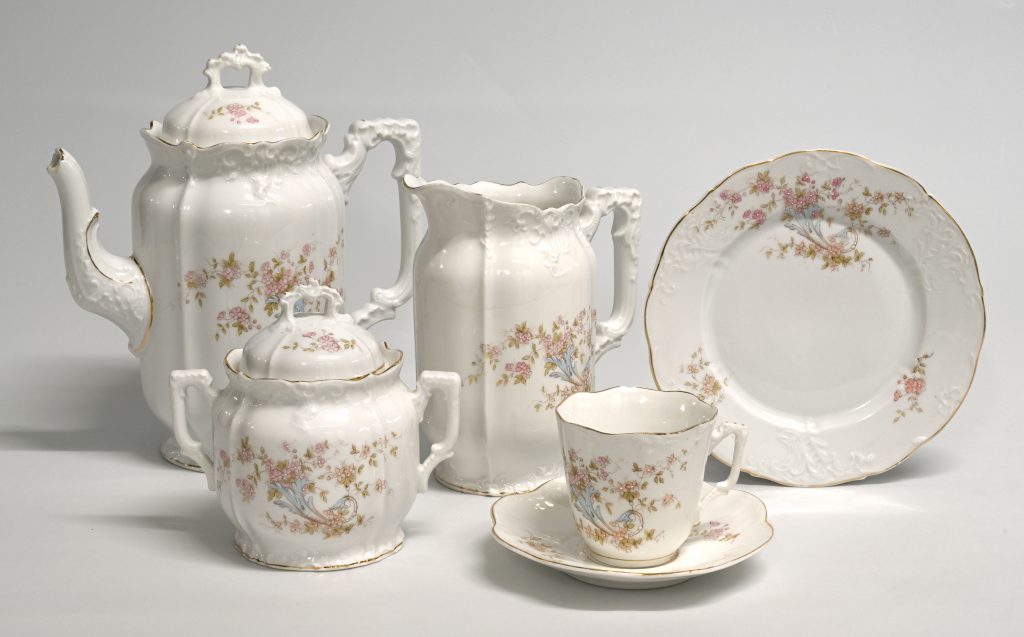
Hard-paste porcelain in CERAMICA CH
Soft-paste porcelain in CERAMICA CH
Porcelain can be made from a variety of clay mixtures, which are fired at different temperatures to produce a range of vitreous and translucent wares. The basic categories are hard-paste porcelain, soft-paste porcelain and bone china.
Hard-paste porcelain
Ceramic material made from an artificial mixture, fully vitrified and glasslike, generally white and slightly translucent. In hard-paste porcelain, the body consists of kaolin (a special type of white clay also known as china clay), feldspar (a ceramic flux) and quartz (facilitates vitrification of the body). Hard-paste porcelain is first fired to a biscuit at a temperature of 800ºC to 1000ºC. The object is then covered in a glaze that also contains feldspar, which is fixed in a second, glost firing at 1350ºC to 1450ºC. Decorations can be applied to the biscuit surface in underglaze painting (usually in cobalt blue) which is then fired with the glaze. Onglaze decorations, on the other hand, are painted onto the glaze and require a third firing at lower temperatures between 800ºC and 900ºC (muffle firing). The gilding of porcelain (burnish gold or gold leaf) requires a fourth firing at 700ºC to 800ºC. The glaze on hard-paste porcelain cannot be scratched with a knife. European hard-paste porcelain was developed in Meissen (Germany) in 1708. While European hard-paste porcelain is generally white, Asian or Chinese porcelain usually has a slightly blue tinge.
Ger.: Hartporzellan
Fr.: porcelaine dure
Soft-paste porcelain
Ceramic material made from an artificial mixture, fully vitrified and glasslike, generally white and slightly translucent. The clay body used to make soft-paste porcelain is a combination of a calcareous white clay (not usually kaolin) with added lime and glass frit or ground glass. After biscuit firing at 1100ºC to 1200ºC, the object is covered in a lead glaze, which is fixed during the second firing at 1000ºC or less. The same decorations can be applied, except that they are smoother and shinier than the onglaze decorations are on hard-paste porcelain. The glaze on soft-paste porcelain can be scratched with a knife, as it is considerably softer than the feldspar glaze on hard-paste porcelain. European soft-paste porcelain resulted from an experimental phase predating the manufacture of European hard-paste porcelain (e.g. Medici porcelain, 1575-1587, French soft-paste porcelain from Vincennes/Sèvres, Chantilly, Rouen (from 1673) and Tournai, or Italian soft-paste porcelain from Capodimonte) and continued to be produced in various locations around Europe even after the development of hard-paste porcelain.
Ger.: Weichporzellan, Frittenporzellan
Fr.: pâte tendre (porcelaine tendre)
Bone china
Bone china was first patented in England in 1742 and then improved upon by Josiah Spode in the 1790s. The first places of production from the mid-18th century onwards were Chelsea (1743), Bow (1745), St. James’s (1748), Longton Hall (1750), Royal Worcester (1751), Derby (1757) and Loewstoft (1757). Initially, a range of different formulas for soft-paste porcelain were used with a high phosphate content from calcined animal bones. By adding kaolin, Josiah Spode later developed a porcelain body consistent with hard-paste porcelain.
Ger.: Knochenporzellan
Fr.: porcelaine de cendre d’os

